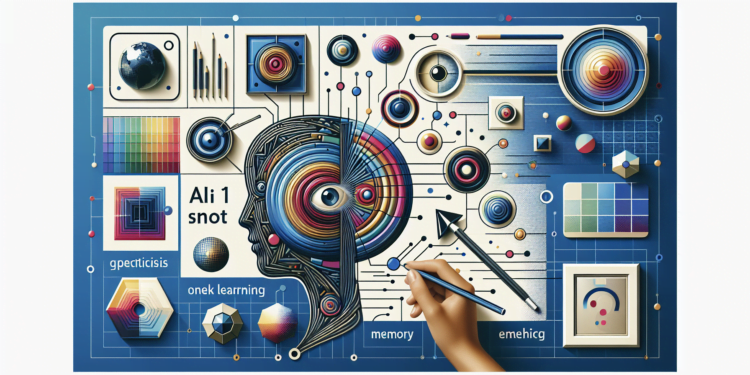One-Shot Learning in Artificial Intelligence: Challenges and Perspectives
Machine Learning (ML) has become one of the cornerstones of modern AI, dominating fields ranging from speech recognition to medical diagnosis. The traditional ML paradigm involves feeding large amounts of data to an algorithm to ‘learn’ from these examples. However, the ability to learn from a single observation or example, known as One-Shot Learning, has emerged as a fascinating frontier in AI research. Although this methodology is still in its infancy, it encapsulates the potential to transform AI’s cognitive capabilities dramatically. In this article, we will explore the innovations and challenges inherent to One-Shot Learning, as well as its potential applications and future projections in the AI field.
Introduction to One-Shot Learning
One-shot learning is inspired by the human ability to learn from just a few observations or even a single one. While humans can recognize new objects or concepts with little effort, machines generally need thousands, if not millions, of examples to achieve reasonable accuracy. One-Shot Learning focuses on designing algorithms capable of extracting significant patterns from a limited amount of data.
Theory and Fundamentals
Within ML, One-Shot Learning is classified as an approach within the supervised learning paradigm, which also includes categories like deep learning. The theory behind this technique involves understanding and replicating a part of human learning plasticity. The architecture of neural networks, especially siamese neural networks, has proven to be one of the most promising for this approach.
Siamese Neural Networks in One-Shot Learning
Siamese neural networks are a special class of networks designed to differentiate between two inputs. The key to their application in One-Shot Learning lies in their ability to learn metrics that measure the similarity between pairs of examples. They are trained to minimize the distance between representations of the same class and maximize it for different classes, allowing the model to distinguish new knowledge with a minimal basis for comparison.
Recent Advances and Challenges
Technological advancements in AI have allowed for the exploration of the viability of One-Shot Learning in various contexts. Algorithms like Matching Networks and Prototypical Networks constitute significant progress in research, as they have demonstrated the capacity to generalize properly after training with a single example. However, there are significant limitations.
One of the main challenges is over-specialization: the algorithm can become very good at recognizing variations of the same example but fails to generalize when faced with new data. Other challenges include the selection of the training example (how representative it truly is) and how to expand the model’s capabilities beyond extremely controlled situations and domains.
Emerging Practical Applications
Despite the challenges, One-Shot Learning is finding its way into real-world applications. In the field of computer vision, it could enable facial recognition systems to learn to identify people with very little training. In robotics, a robot could learn new tasks simply by observing a human performing them once. In personalized medicine, diagnoses tailored to specific individuals could be developed based on just a few biomarkers.
Comparison with Previous Works
One-Shot Learning differs significantly from traditional ML approaches where the amount of data is directly proportional to the model’s performance. Historically, overfitting was an imminent risk without a vast training set. Previous models required extensive feature engineering to improve their performance with few data, while current approaches seek intrinsic adaptability of the model to new examples.
Future Projections and Possible Innovations
Looking to the future, One-Shot Learning appears to be on the cusp of considerable advances. The use of transfer learning techniques and modeling of contextual information are areas that could provide significant improvements to this technology. Moreover, integrating generative models that can synthesize new examples from a limited sample could overcome many of the current limitations, emulating even more closely the flexibility of human learning.
Real Case Studies and Pertinent Situations
To illustrate the applications of One-Shot Learning with real situations, consider the case of an AI system developed to diagnose rare diseases. With just a small set of medical images, this system is capable of identifying pathologies that are infrequent and challenging to diagnose, demonstrating the valuable application of this technique in scenarios where data is scarce.
One-Shot Learning represents an incredible promise in the evolution of AI, challenging us to rethink the traditional limitations of machine learning and offering a window into futures where machines can learn in a much more natural and efficient manner. This article is merely a glimpse into the vast potential and challenges that this exciting field has to offer. Continued research in this domain of AI could very well dictate a new era of machine learning and the cognitive capabilities of artificial intelligence.






















